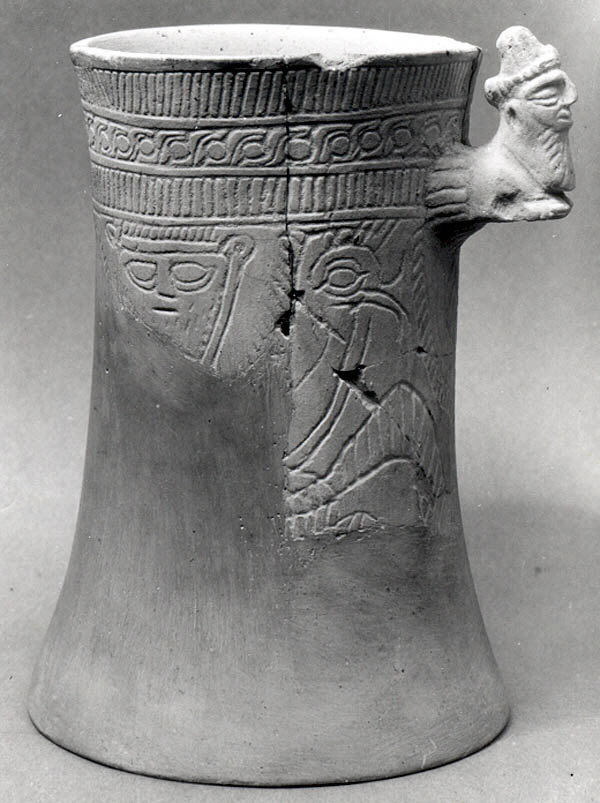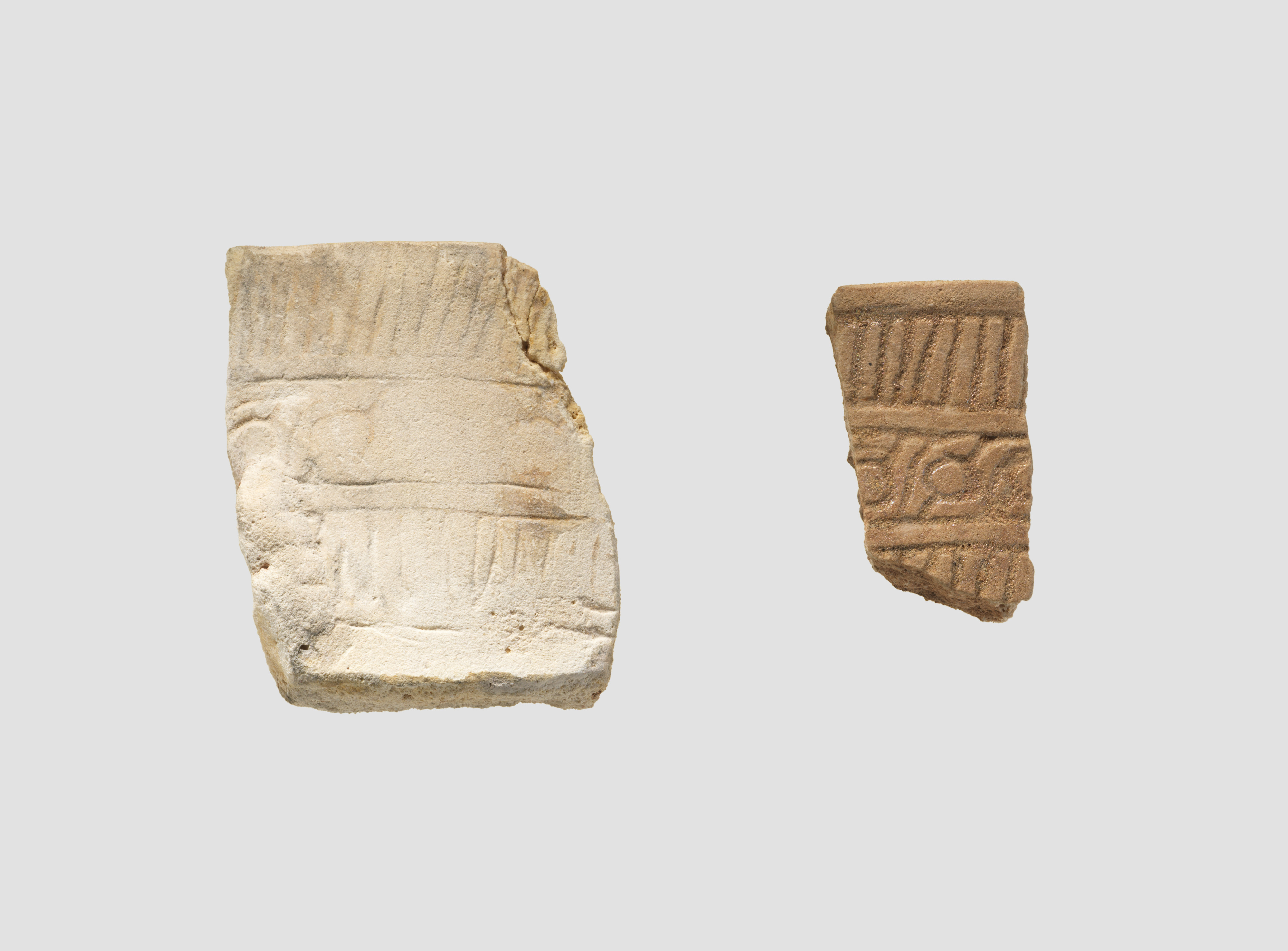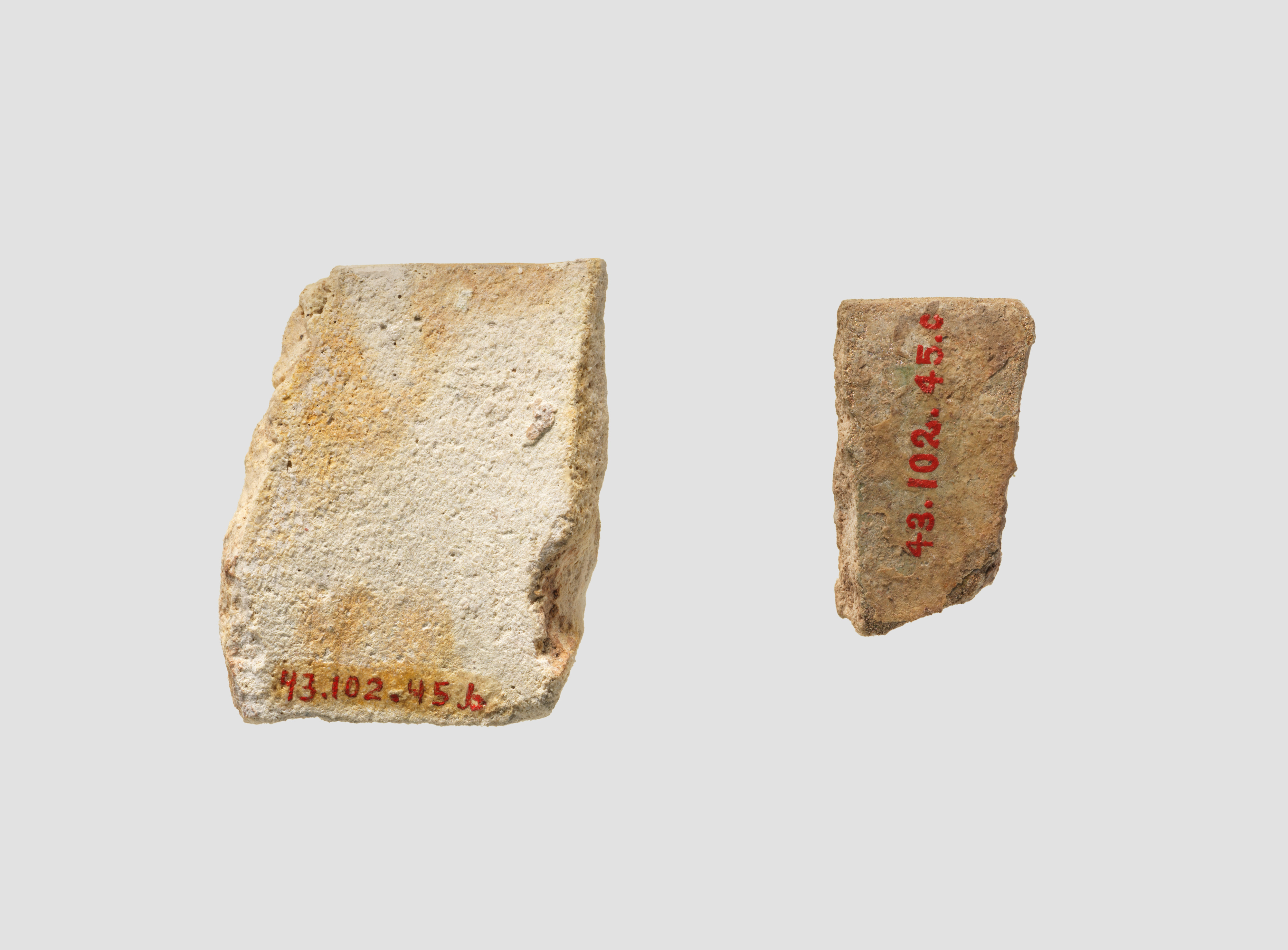Vase with a handle in the form of a human-headed bull protome
Not on view
This faience vessel has incised decoration on the outside, including two rows of vertical lines with a guilloche pattern between them below the rim. The body of the vessel has a stylized human figure facing forward, with a large bird on the right. A protome, possibly a handle, emerges from the rim of the vessel in the form of a kneeling human-headed bull creature. He has a long beard and a bulbous hat with two horns at the front, indicating divinity. His eyes are seemingly closed.
This vessel was excavated at Surkh Dum, a settlement site in Luristan in the Zagros Mountains of western Iran. It was found in a structure interpreted as a sanctuary and was thus probably an offering to a god. Other faience vessels with similar designs but different shapes have been found at Susa, suggesting that it was made in Elam.
The human-headed bull is a well-known feature of ancient Near Eastern art. Often called a ‘lamassu,’ the creature is generally understood to be a protective entity, which is why colossal bull-men are represented in the doorways and gateways of Assyrian and Achaemenid palaces.
This image cannot be enlarged, viewed at full screen, or downloaded.
This artwork is meant to be viewed from right to left. Scroll left to view more.





